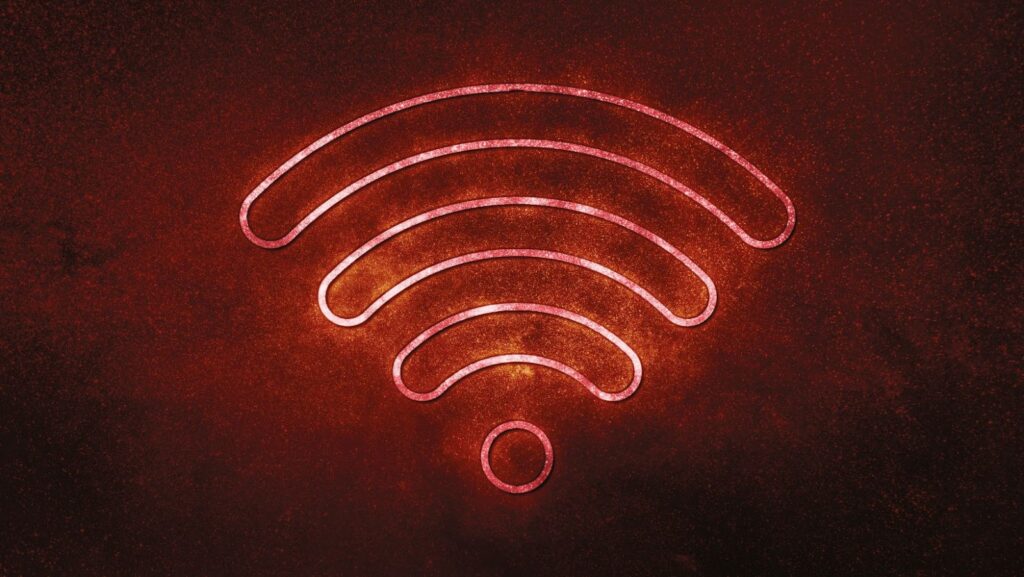
Starlink is an innovative internet service provided by SpaceX for customers who are seeking fast and reliable internet access without needing to rely on existing wired or wireless networks. The system consists of a communications satellite network that provides broadband internet access with up to one gigabit per second. However, some users have noticed that their Starlink internet speeds have recently dropped. This article will provide an overview of what may be causing this issue and the steps customers should take to resolve the problem.
The most likely cause of the decreasing speeds could be several factors, including weather interference, incorrect equipment settings, inadequate transmission power levels, or a combination of these issues. Further diagnosing would need to be done to determine what is causing the issue as each customer’s setup may vary slightly.
To start troubleshooting your Starlink Internet connection, we recommend ensuring that any incoming hardware is properly connected and powered on. This includes satellite terminals, modems, routers, etcetera which make up your connection (if applicable). Additionally, validating that any settings are up-to-date is important for providing the optimal performance from your Starlink setup. Furthermore, validating transmission power level adjustments are ideal for optimising reception quality when operating in challenging environments with varying degrees of temperature and precipitation accordingly. Lastly double checking that there are no obstructions in front of or below the antenna can also help improve reception depending on your physical location concerning space-based satellites expected arrival paths due to its weak signal overall against terrestrial interference from common home devices such as wifi extenders or digital appliances making up many households these days..
Starlink Internet Speeds are Continuing to Drop
With Starlink offering a viable, consumer-grade internet option, speeds have been a major talking point. Over the past few months, however, speeds are declining, leaving customers wondering why their service is not as reliable as it was initially.

In this article, we will explore the causes of why Starlink internet speeds might be dropping.
Congestion on The Starlink Network
One of the main causes of internet speed drops with Starlink or other satellite-based systems is congestion on the network. This occurs when too many users try to access the same bandwidth simultaneously. When this happens, each user experiences slower speeds than normal as more and more demand is placed on the network.
In addition to congestion, some users may experience slower speeds due to interference from nearby wireless devices such as cellphones, microwaves, and Wi-Fi hotspots. If multiple wireless devices operate nearby, they can interfere with each other causing slowdowns in internet speed. To mitigate this issue, you should try turning off any neighbouring devices that may interfere with your service or moving them away from your router/satellite dish.
It’s also important to note that certain natural elements such as weather or solar flares can cause signal fluctuations resulting in slower speeds over long distances like those between a satellite dish and an internet service provider’s (ISP) base station located hundreds of miles away. While these conditions are out of customers’ control, Starlink has implemented measures to ensure continuous service despite adverse weather or solar radiation interference by using different frequencies at different times depending on environmental variables like sunspot activity.
Weather-Related Interference
Weather-related interference can be one of the primary causes of dropping Starlink internet speeds. Even clear weather can cause minimal signal strength or latency disruptions, but the effects are much worse when weather conditions interfere with the signal. This can happen when rainfall, snowfall, bad storms, and other phenomena occur. For example, raindrops scatter long wavelength signals from Starlink’s antennas and create additional noise, reducing broadband speeds and causing latency issues. Similarly, snow or cloud cover can block the Starlink satellites’ signals from reaching users’ terminals below, resulting in higher noise levels and decreased performance. In some cases, when atmospheric noise is too loud or heavy rain or clouds blocking signals significantly, the connection may suffer an outage completely.

To reduce these temperature-related disruptions as much as possible, it is wise to keep your terminal free of any foreign object such as trees or walls that may block incoming and outgoing signals from passing freely during changing temperatures throughout the year.
Poor Quality Equipment
Poor quality equipment is one of the primary factors contributing to slowdowns in Starlink internet speeds. Sometimes, a malfunctioning satellite connection or improper router installation can cause persistent speed issues. Therefore, it is important to ensure that the equipment used is of adequate quality, as faulty components can drastically reduce performance. Additionally, the age and condition of the Starlink network router can play an important part in reducing speeds. Ideally, an up-to-date and well-maintained router should be used whenever possible, as this will ensure maximum performance and reliability.
Users should also ensure that they use recommended cables in their setup as incorrect wiring can impair functionality. For example, if an individual attempts to use lower grade cables, such as those designed for Voice over IP systems or wired networking, this could cause severe lags or latency issues in their connection. Proper installation and use of high-speed only cables suitable for satellite connections is essential for optimal speeds from the Starlink system.
Poor quality Wi-Fi routers can also affect overall speed capabilities from a Starlink connection. Many Wi-Fi routers are more limited and lack features such as multiple antennas, which would provide higher download rates over extended distances from satellites above ground level.

Users should examine their router to see if it supports at least dual frequency band (2.4/5GHz) support – any newer model with 802.11ac technology should be suitable too – if not, then upgrading may prove beneficial to increase speed potentials significantly with their current setup
Impact of Dropping Speeds
The slowing of Starlink Internet speeds is having a major impact on users. Many users who expected lightning-fast speeds and low latency when subscribing to Starlink, are now seeing slower speeds than initially promised. This slowdown in speeds can be attributed to several factors which are important to know to identify and address the root cause. This article will look at the various causes of the dropping speeds and how to mitigate them.
Reduced Performance
As is often the case when introducing a new technology, the launch of Starlink satellites came with an initial period of reduced performance. However, as more satellites are launched, the service should improve significantly as Starlink develops new networking technologies to improve speed and reliability.
It is worth noting that performance can also decrease due to different factors such as weather and local interference from other devices. However, the main cause of decreased performance has been attributed to what SpaceX calls “thermal compression”. This occurs when large numbers of Starlink satellites are nearby during orbit, leading to a temporary reduction in speeds for the affected area.
To improve service quality, SpaceX has been deploying more satellites at a higher orbit which allows them to be further apart and minimises this issue. Additionally, Starlink has started testing ground antennas that can provide improved speeds compared to those provided by its satellite network. This will allow users in areas with poor satellite coverage or bad weather conditions to access fast internet connections without any disruption or drops in performance.
Increased Latency
Increased latency is one of the main reasons for why satellite internet speeds tend to drop over time. Latency describes the time a signal travels from the customer’s modem or router to the nearest ground station. Latency is measured in milliseconds, and this precise measurement can be easily impacted by weather and other factors.
An increase in latency affects satellite internet speeds because data travelling between devices takes longer than normal to arrive at its destination. This slowdown can be especially noticeable when streaming video or gaming online. As a result, users may experience buffering or lag during use, further decreasing their overall connection speeds.
Latency typically increases with distance, and modern technology has improved latency response times while decreasing transmission lag and jitter. In addition, many of today’s systems are designed specifically to mitigate any potential latency issues before them impacting service performance or broadband speed output, ensuring customers receive their expected speeds even when weather conditions may change suddenly..
Higher Costs
The sudden surge in the demand for Starlink Internet has caused dramatic changes in their ability to meet customer needs. Unfortunately, the hard truth is that increased customers means higher associated costs that can affect their internet speeds.
A big chunk of Starlink’s revenue comes from subscribers paying hefty monthly prices. However, with an exponential surge in consumer base over the past few months, costs are growing even faster than its consumer base, which may lead to higher service prices or slower speeds for existing customers.
Starlink has enjoyed cost advantages due to its large subscriber base, but higher demand entails costs associated with meeting customer needs. These rising costs are linked to providing coverage worldwide — including expenses associated with deploying additional hubs and covering maintenance and running between them. This inevitably leads to rising operation and maintenance (O&M) expenses that Starlink has to bear directly or indirectly from customers through fees increases or slower service speed.
Beyond O&M expenses, infrastructure is a significant cost component, such as satellite leasing costs and other investments related lawsuits/litigation/regulatory filings etc., which affects Starlinks’ bottom line profits. Moreover, regulatory and licensing fees in certain countries can add up significantly over time since they tend to be fixed given the country’s legal regime. All these factors combined result in a lot of money pouring into maintaining Starlink’s internet speeds. In addition, higher subscriber intake along with consequential infrastructure strengthening adds fuel to fire; this may be one of the reasons why users are experiencing reduced speeds at peak hours when more people get online simultaneously thus using up more bandwidth/resources per user on average than normal use did before this boom period began!
Solutions to Improve Speeds
As the demand for Starlink Internet grows, so does the need for solutions to improve internet speeds. Unfortunately, with its increasing popularity, many users have been noticing that the speeds of their Starlink connections have been dropping. In this section, we will look at ways to improve Starlink Internet speeds and ensure a stable connection.
Upgrade Equipment
One of the solutions to improve Starlink internet speeds is to upgrade your equipment. This includes your router, modem, and other networking hardware such as Ethernet cables. Upgrading outdated or faulty equipment can result in a significant increase in performance.
To ensure that you have the latest devices, it’s important to check with the manufacturer regularly for updates and new models. In addition, your modem and router should be interoperable to maximise performance when sharing data across networks. An updated firmware version on your device will also boost performance by reducing latency and providing enhanced encryption support.
The cable used to connect devices should also be checked regularly since laptops, phones, tablets, and other devices benefit from having high-quality cables capable of transferring more data faster across longer distances. In addition to these possible solutions concerning equipment upgrades, there are other reasons why Starlink internet speeds may be dropping that should be explored further.
Optimise Network Configuration
Optimising your network configuration is a great way to improve Starlink’s satellite internet speeds. The most effective solutions focus on reducing latency or the delay in response time caused by the distance the signal must travel. For example, you can optimise your network by doing the following:
- Allocating more network capacity to faster connections such as Ethernet and cable
- Using a stronger Main Outdoor Unit (MOC) with a higher ‘gain’ value for better signal strength
- Installing an amplifier to boost your outgoing signal strength
- Connecting to unshared/dedicated access points rather than shared Wi-Fi networks which are more prone to congestion
- Tweaking router settings for optimal performance including channel width, channel selection, and packet fragmentation
- Disabling QoS (Quality of Service) which can cause significant slowdown due to prioritising certain types of traffic over others
These strategies will help you make the most of Starlink’s satellite Internet services, improving speeds while minimising responsiveness issues.
Increase Bandwidth
Increasing the available bandwidth is one of the most effective solutions to improve Starlink internet speeds. Bandwidth measures how many bits can be sent across a network connection in a given amount of time. While it is typically measured in kilobytes or megabits per second, higher bandwidth can help improve upload and download speeds. Broadband providers typically offer multiple packages with different bandwidth levels, so customers can opt for more expensive packages with faster speeds if they’re willing to pay for it. Additionally, home Wi-Fi networks may benefit from additional equipment such as extenders or mesh network systems that can expand coverage area and provide additional Wi-Fi signal strength.
Conclusion
In conclusion, several factors can affect your Starlink connection speeds. Whether it is due to the channel you are using, weather conditions disrupting the signal or overcrowding due to large numbers of users at peak times, Starlink internet speeds can drop significantly.
However, the best way to ensure you get the most reliable speed possible is to choose a frequency with the least interruptions during peak hours and try connecting via an Ethernet connection where possible. Additionally, this will help reduce latency associated with Wi-Fi connections. Finally, you should also keep your antenna in its optimal position for signal reception and look into troubleshooting network performance to optimise your receiving capability from orbiting satellites. With these tips in mind and proper maintenance strategies, users of Starlink internet should be able to maximise their connections with minimal disruption issues.
tags = starlink satellite, internet speed dropping, spacex starlink, internet frequency drops, starlink voip fcc lifelinebrodkin arstechnica, fcc starlink voip lifelinebrodkin arstechnica, starlink voip lifelinebrodkin arstechnica, fcc starlink voip fcc lifelinebrodkin arstechnica, 7500 space satellites, boost internet speed, starlink faster internet










